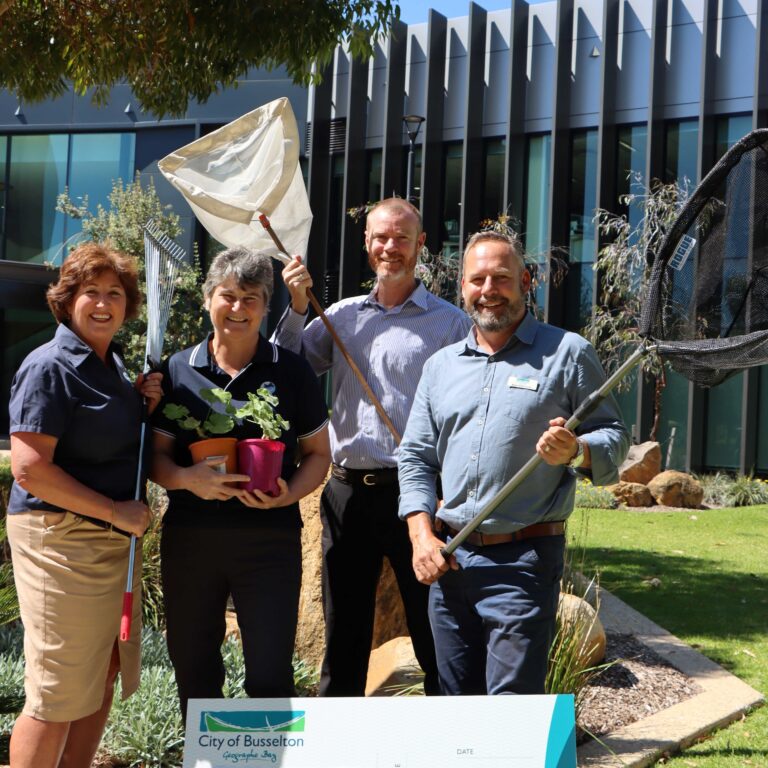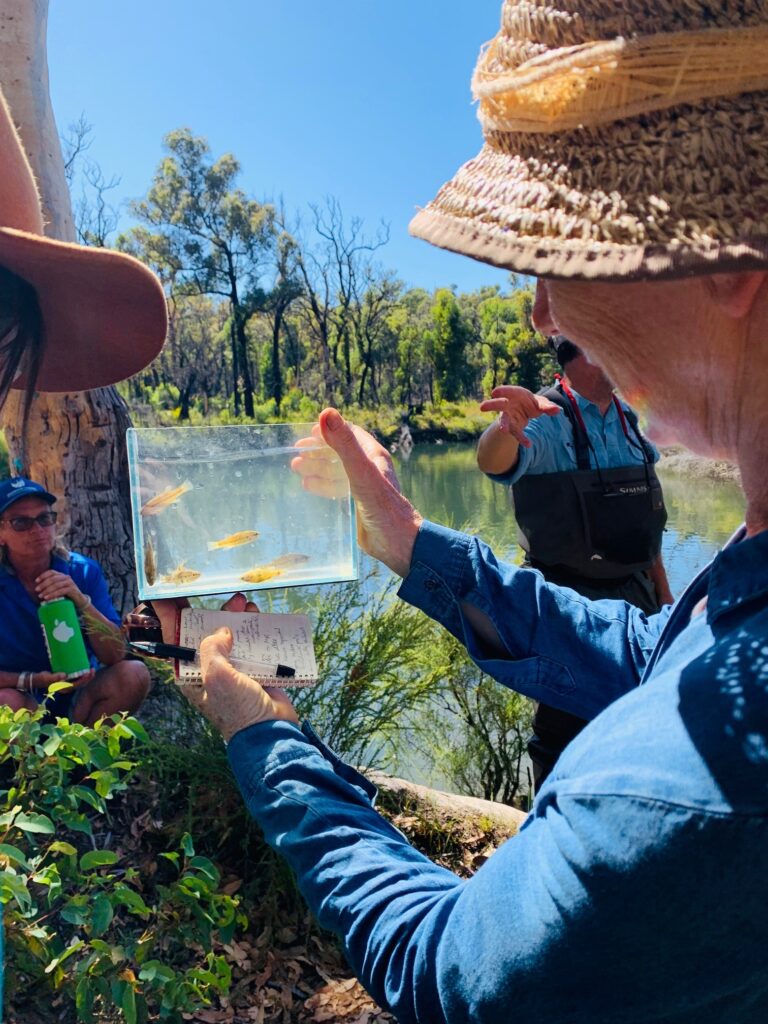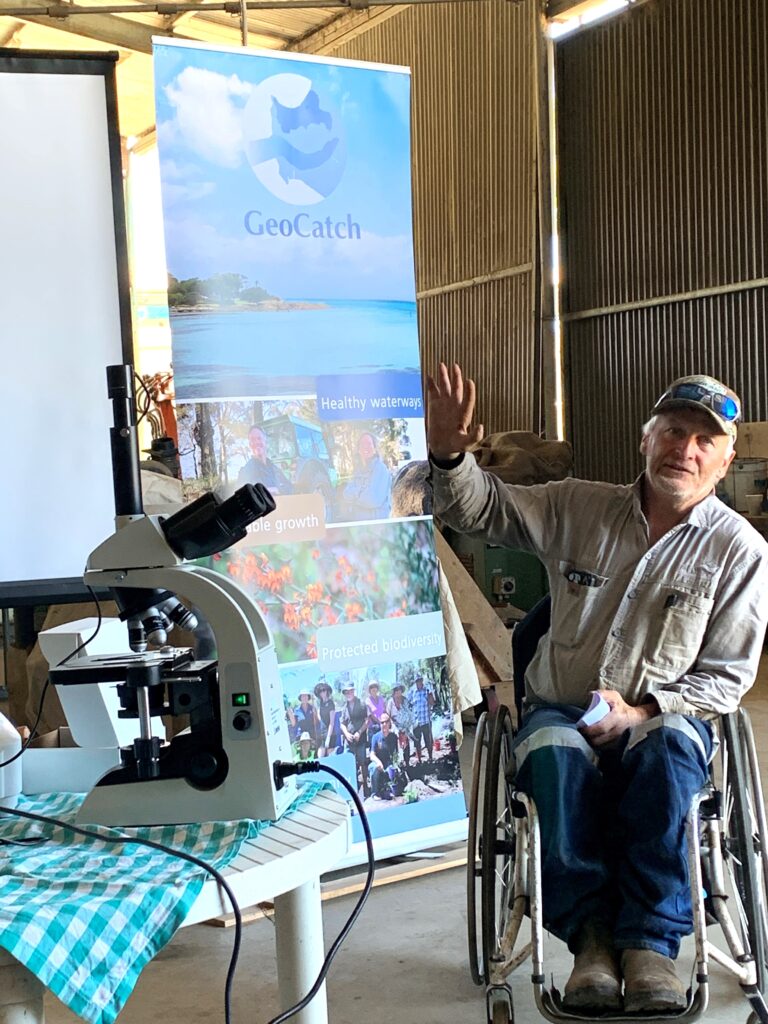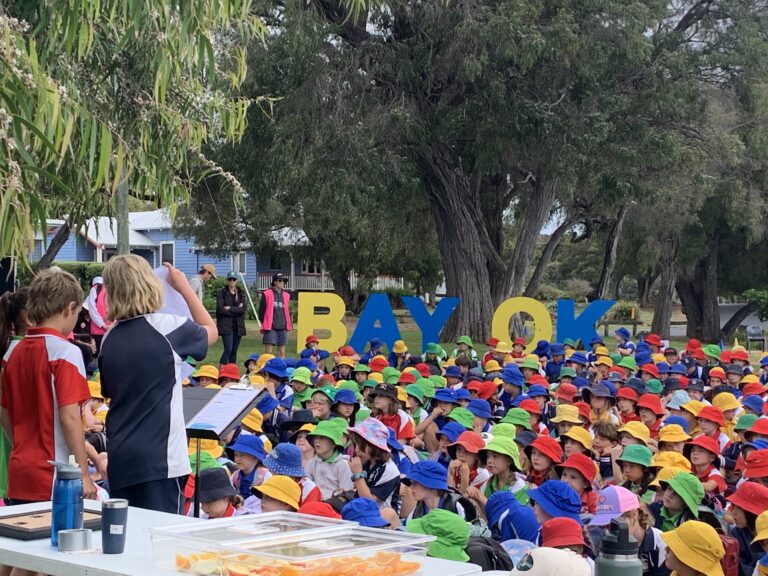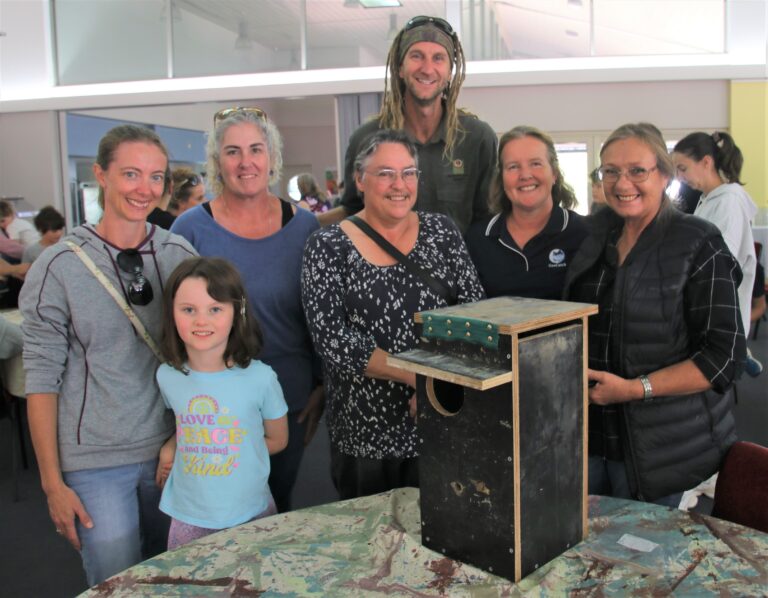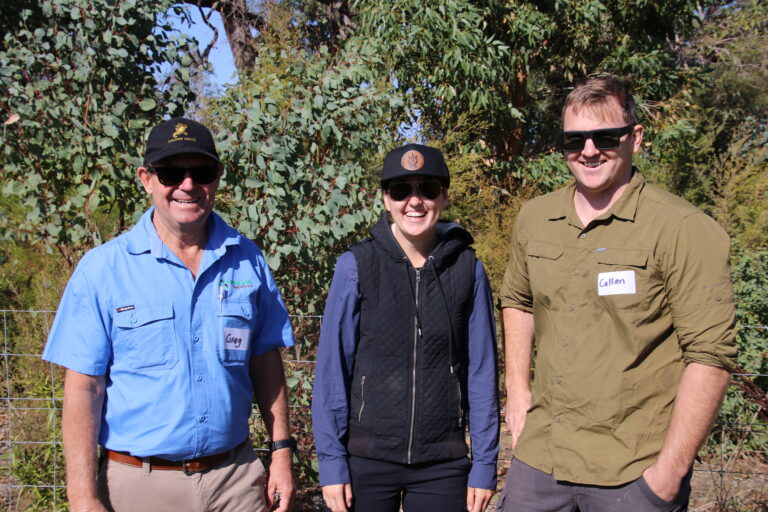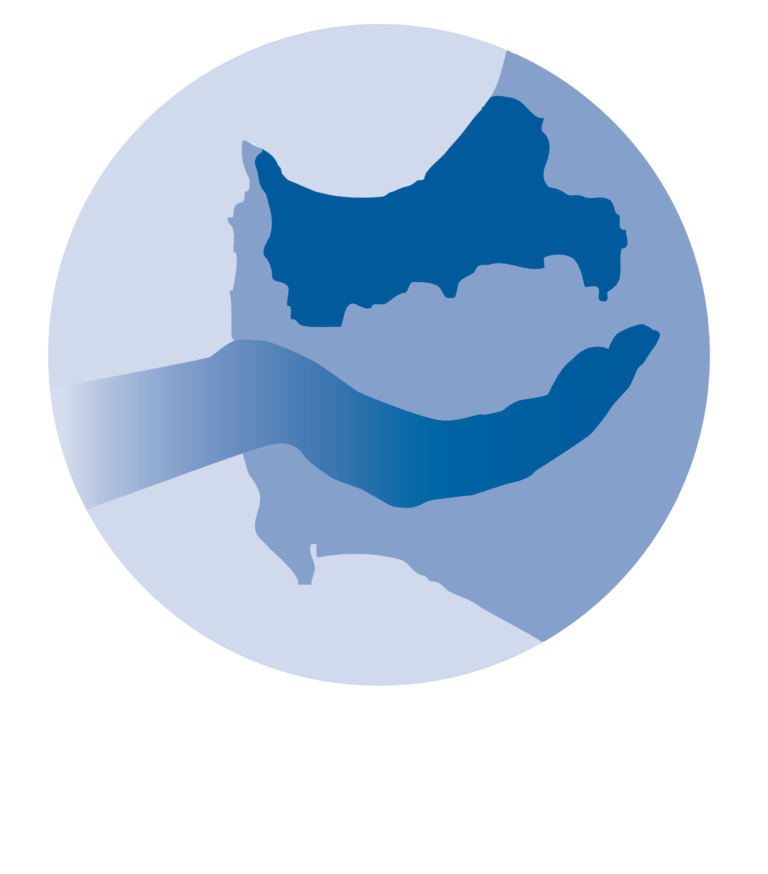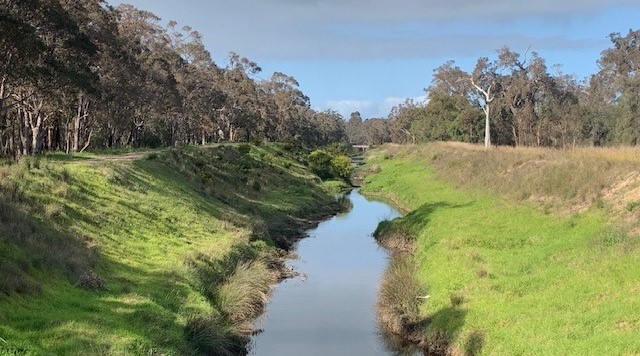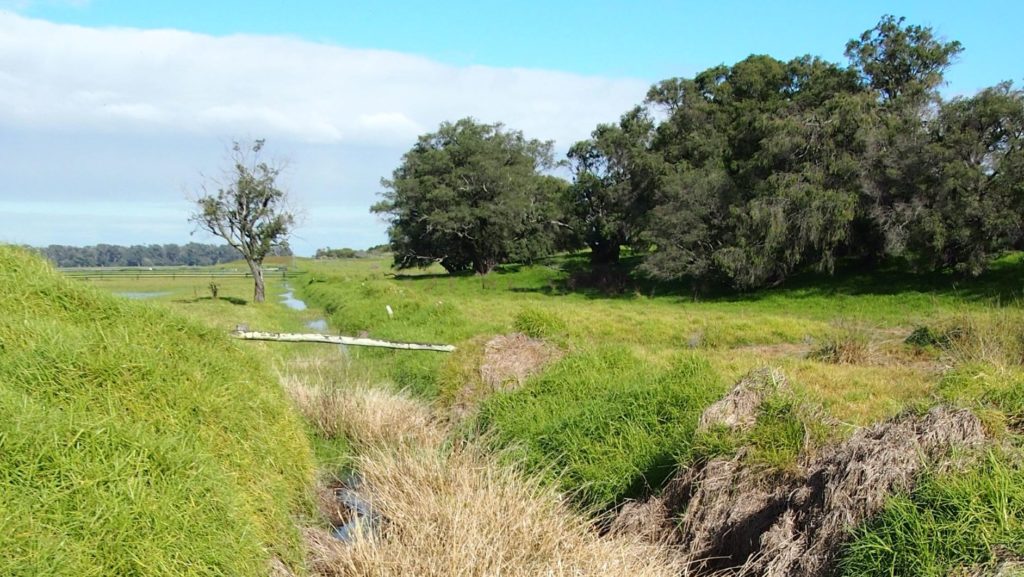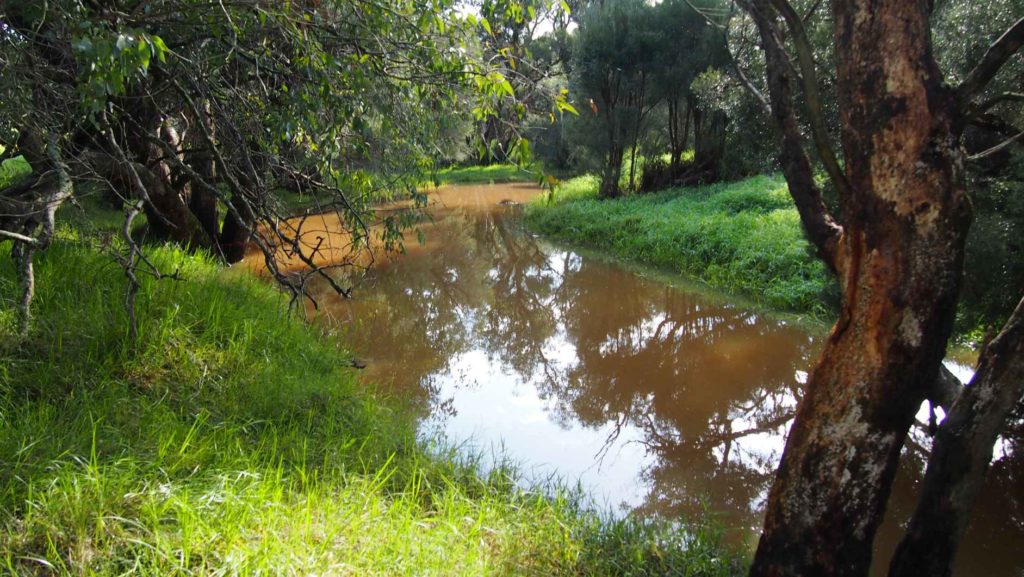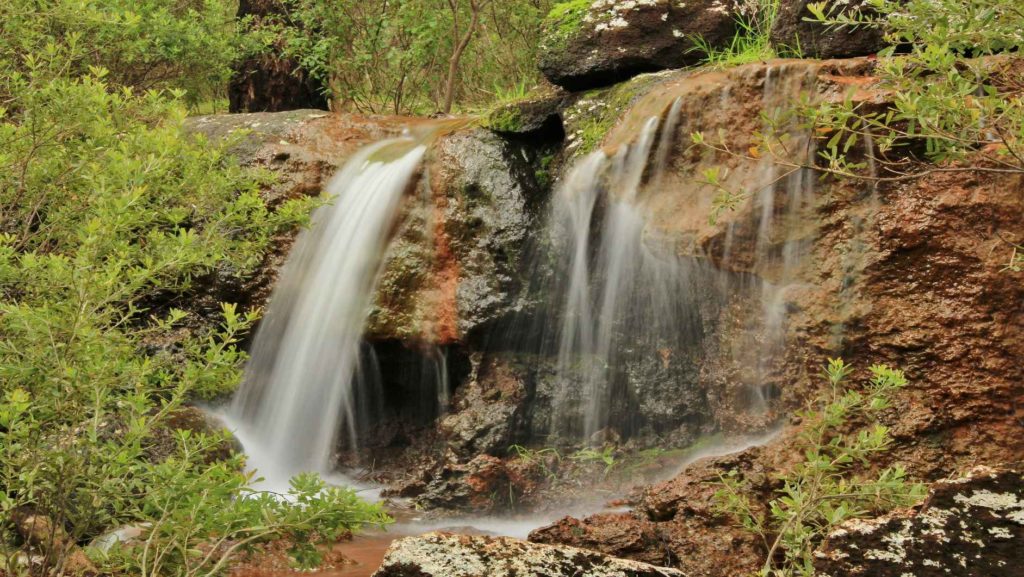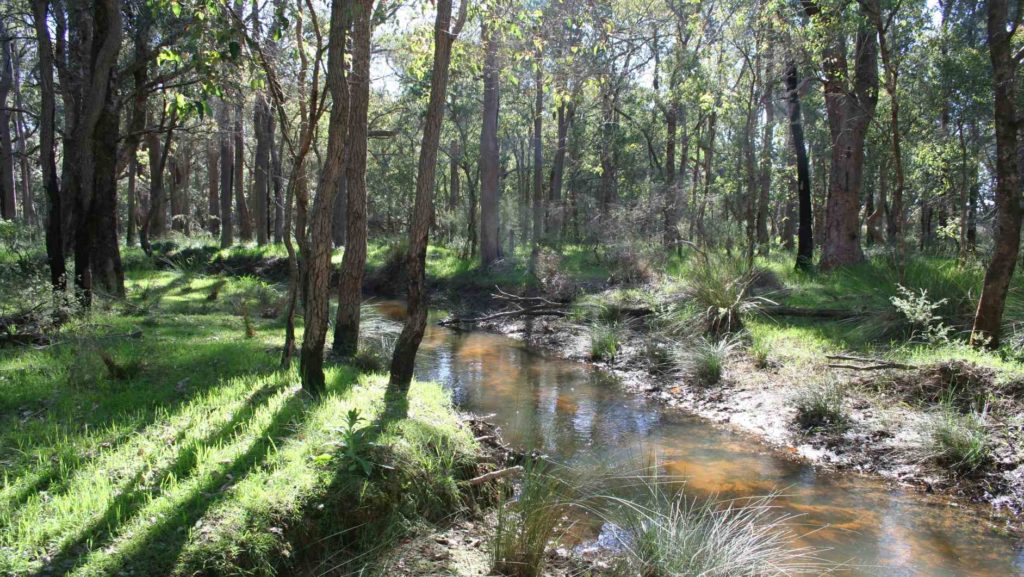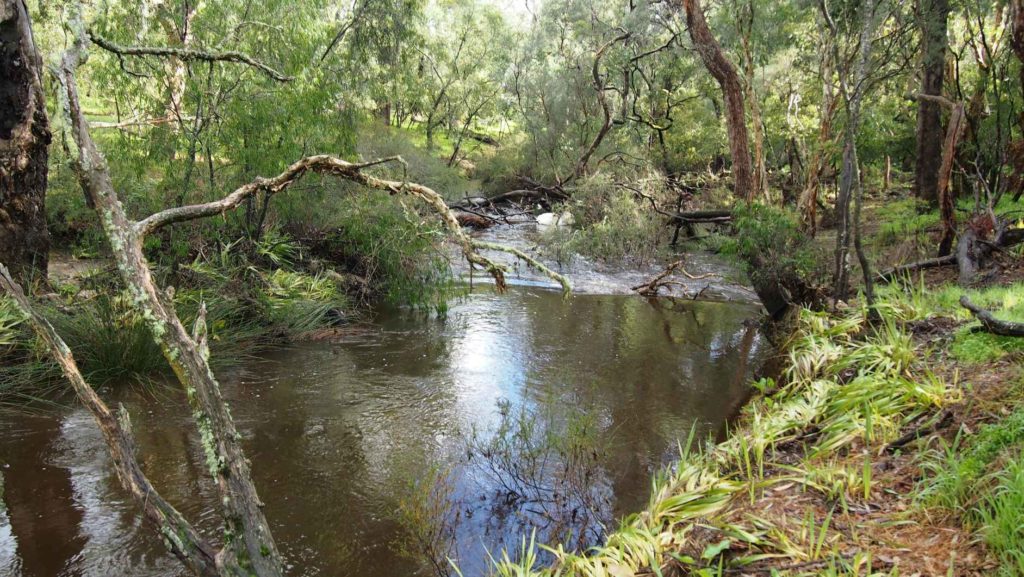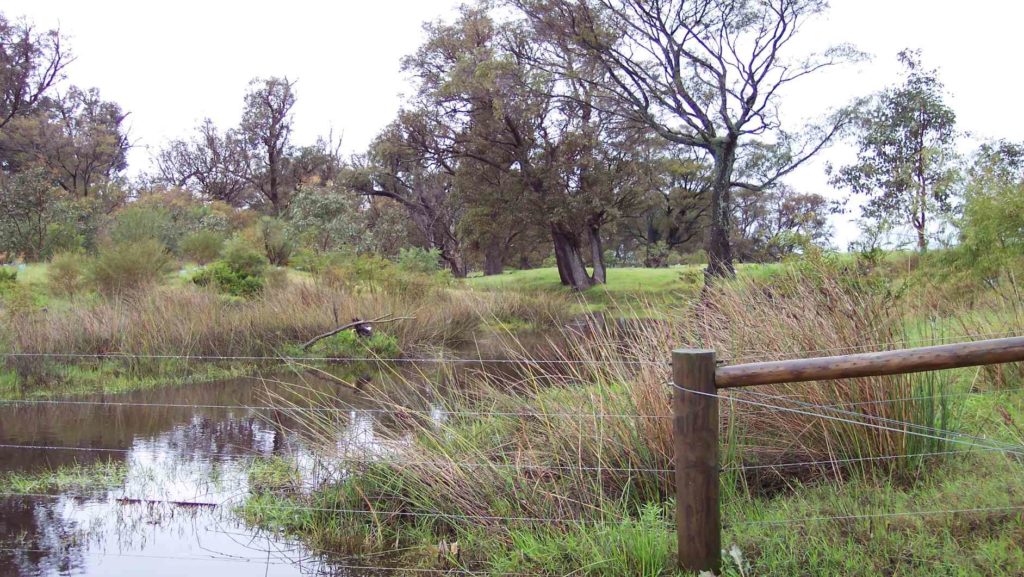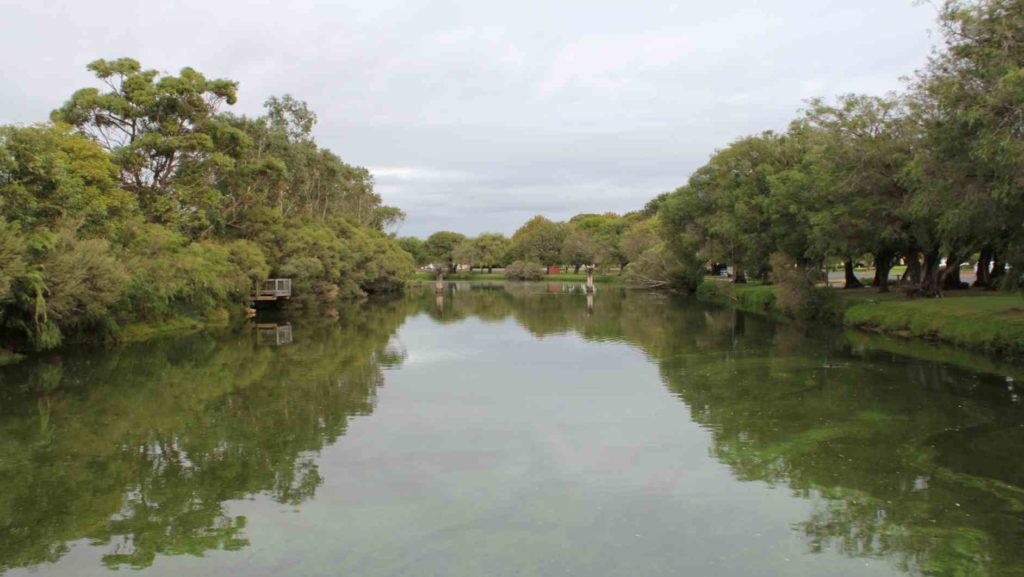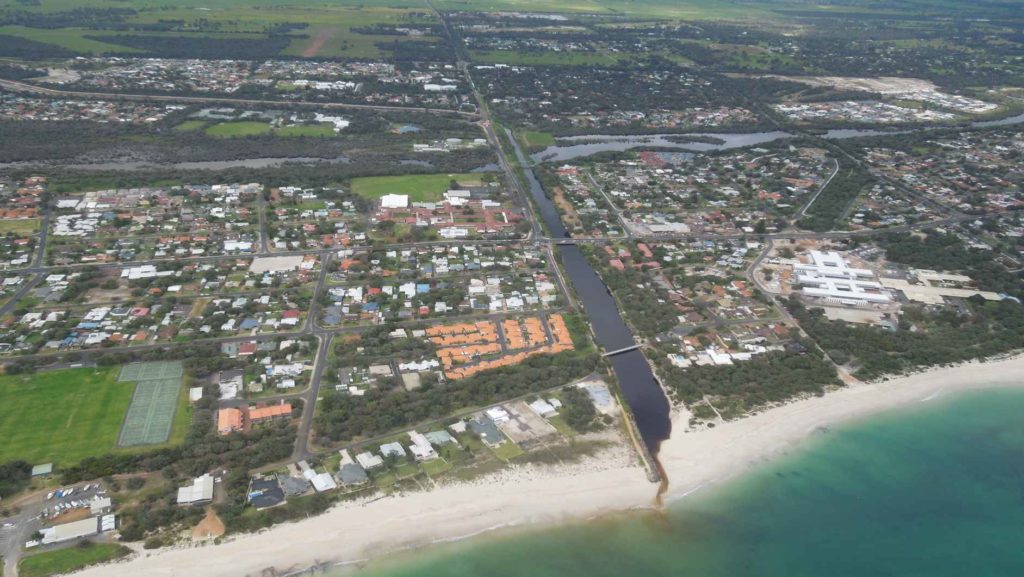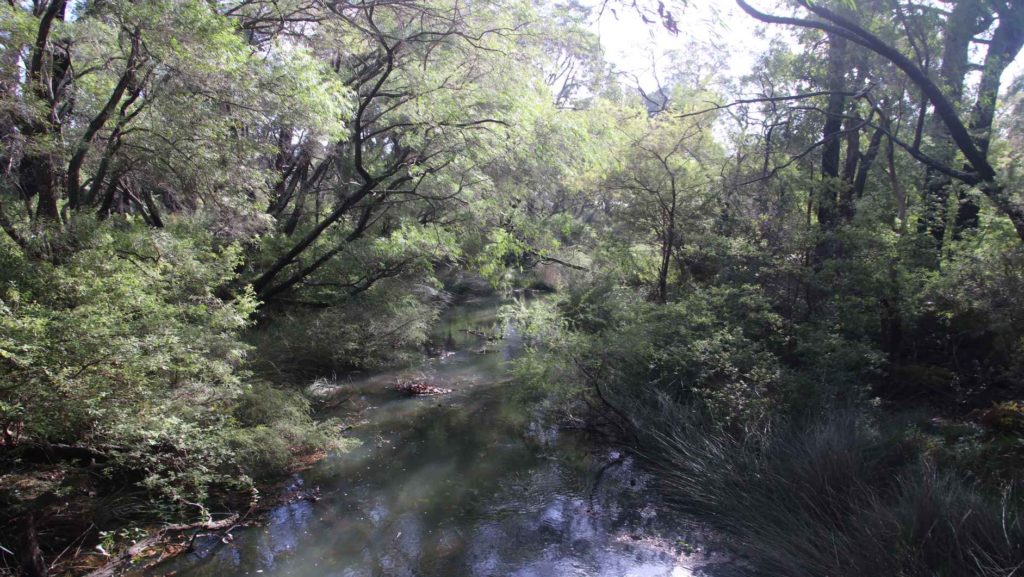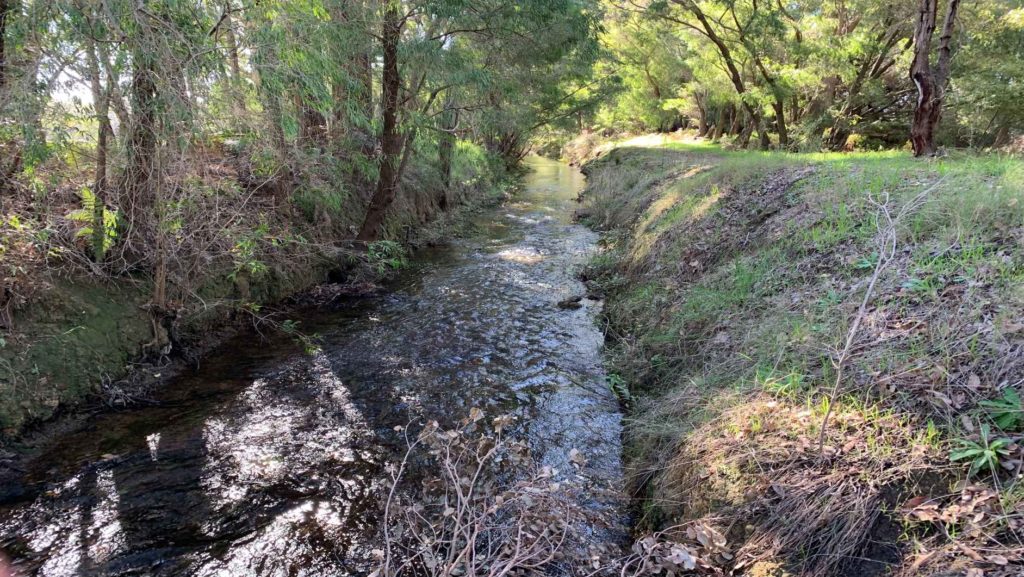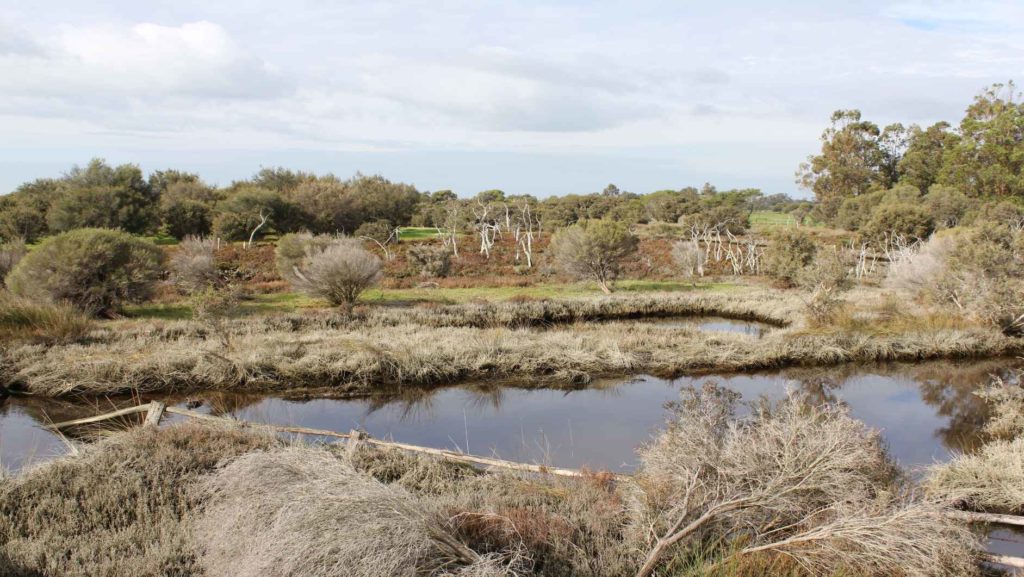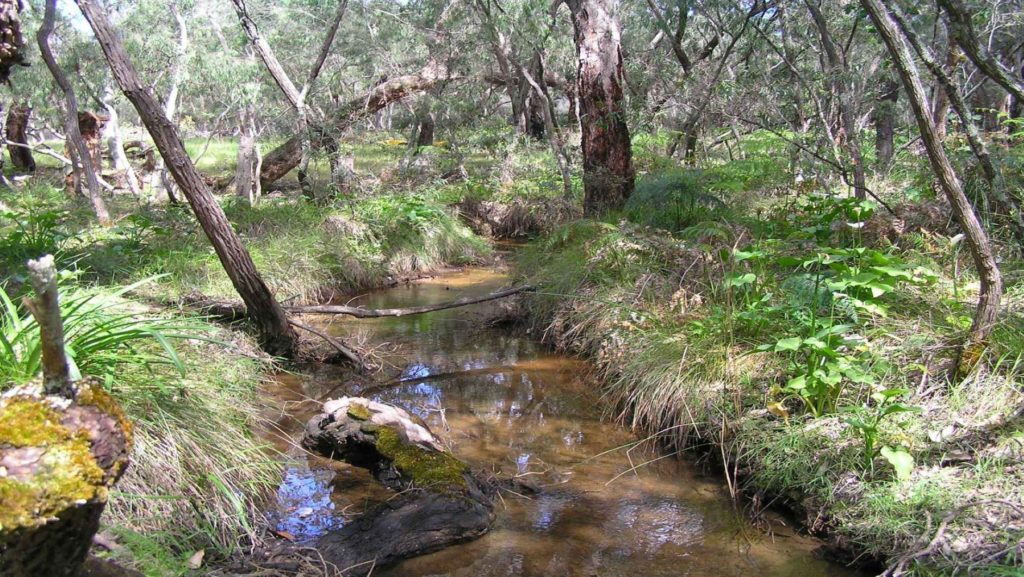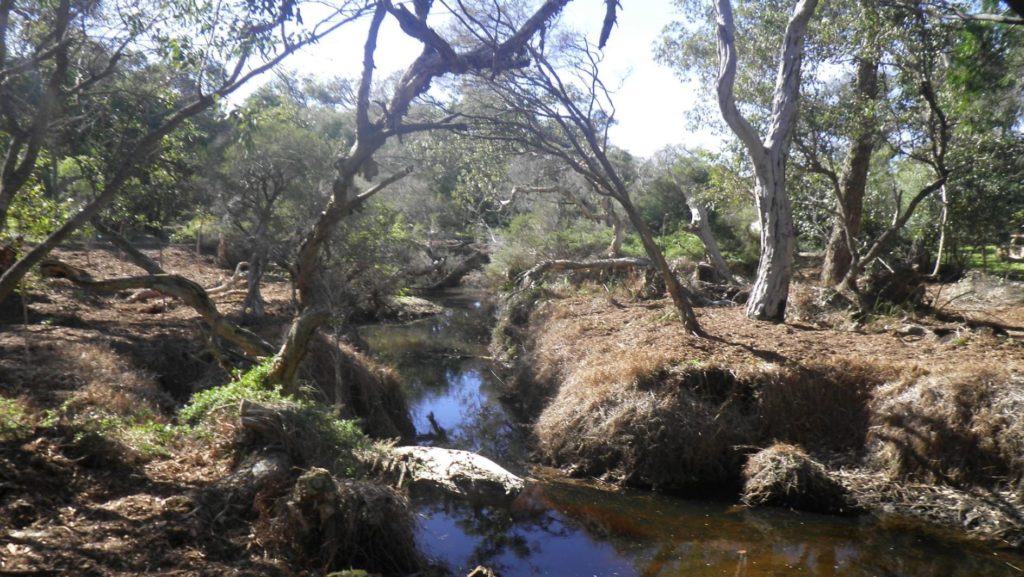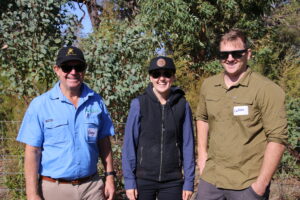
Dedicated farmers from across the Geographe Catchment gathered at Sabina River last week to learn how to bring the waterways on their properties back to life. GeoCatch Rivercare Officer Claire Macleay and revegetation specialist Greg Overton used three different rehabilitated sites to illustrate what can be achieved with fencing and revegetation.
Greg emphasized to the group that site preparation before planting is vital to the success of the plants. “Ground preparation and weed control are the most important parts of a revegetation project. If you don’t get on top of weeds, they will quickly outcompete your seedlings,” said Greg.
Selecting the right plants for the area is also very important. “Some of the waterways around Busselton have been grazed for well over 100 years and are highly degraded with little remaining of the original species. It is important to try and work out what would have been there originally and select plants that will work in those specific soil types,” said Greg.
Geographe farmers Callan and Steph Barnes (below with Greg Overton) attended the workshop in preparation for revegetating a creek on their property. Callan explained that there are challenges in rehabilitating waterways, but the results are very rewarding. “We are about to fence our waterway in preparation for planting in winter 2024. One of our main challenges is wet, waterlogged areas in winter, so species selection is important to get the right plants to grow in that area.”
Busselton farmer Fiona Bowden also came away with some new ideas on fencing and stock control. “Our main challenges to growing trees are kangaroos, rabbits, and arum lilies. We love the roos, but they are not helpful in starting the seedlings. It is a long-term plan and we have only just started, but I have been inspired to see what other people are doing in waterway revegetation,” said Fiona.
Claire explained that the Rivercare program supports landholders in the Geographe Catchment to install stock exclusion fencing along waterways on their property. “We have been assisting farmers with stream restoration for over 25 years, with over 450km of riparian fencing and revegetation installed,” said Claire.
Greg concluded the workshop with his thoughts on improvements made in stream rehabilitation over the years. “How do we measure the success of rehabilitation? You can do many measurements: weed counts, species survival rate, soil analysis and many more. But for me, I measure success if I can hear the trees. If the birds and wildlife are using it, that is a success,” said Greg.
This project is part of Healthy Estuaries WA and Revitalising Geographe Waterways programs. These State Government initiatives aim to support the long-term health of our south-west estuaries.

